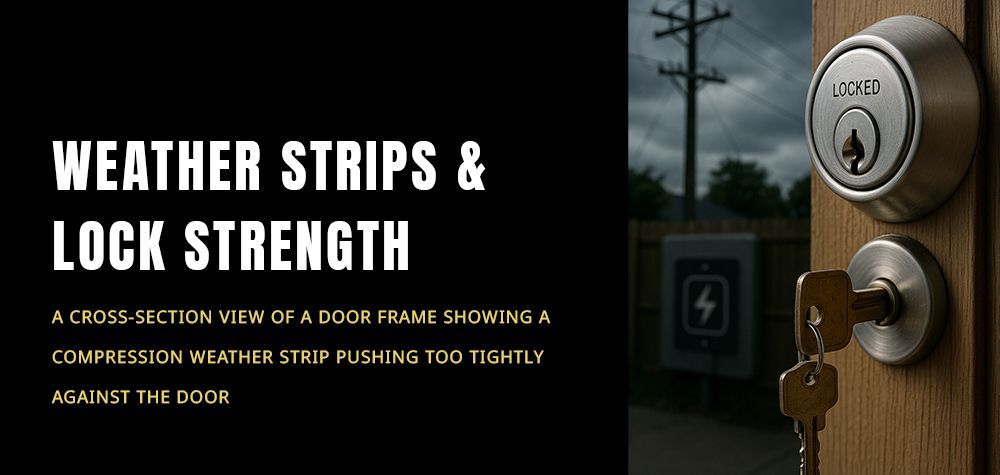What Is a Bump-Proof Lock and How Does It Work?
Securing your home or business is one of the most critical steps in protecting your loved ones, valuables, and peace of mind. Traditional locks, while widely used, have a vulnerability that many people may not be aware of—lock bumping. This technique allows intruders to manipulate pin tumbler locks using a specially crafted key called a bump key. This has raised serious security concerns, leading to the development of bump-proof locks.
In this guide, we’ll dive deep into what bump-proof locks are, how they work, their advantages, and whether they’re right for you.
How to Choose the Right Lock for Your Front Door
What Is a Bump-Proof Lock?
A bump-proof lock is a specially designed locking mechanism that cannot be compromised using bump keys. These locks are engineered to resist the manipulation of their internal pin system, offering enhanced security compared to traditional locks.
Unlike conventional locks, bump-proof locks often feature advanced designs, such as side-locking bars, rotating disks, or electronic keypads, which eliminate or reduce the reliance on standard pin-and-tumbler systems.
Why Bump-Proof Locks Matter
With lock bumping becoming a known and relatively simple technique for breaking into homes, having a bump-proof lock can significantly improve the safety of your property.
How Do Bump-Proof Locks Work?
Bump-proof locks use alternative mechanisms that make it impossible to align the pins in a way that would allow a bump key to open the lock. Here’s how:
1. Side-Locking Bars
Some bump-proof locks replace the traditional pin tumbler system with a side-locking bar mechanism. Instead of aligning pins, the lock uses a bar that must be manipulated in a specific way to open, rendering bump keys useless.
2. Rotating Disk Mechanism
Other bump-proof locks feature rotating disks that align only when the correct key is inserted. Since there are no pins to manipulate, bump keys have no effect.
3. Electronic and Keyless Entry Locks
These locks eliminate the physical keyhole altogether, relying on digital codes, fingerprints, or smart technology to grant access. Without a keyhole, lock bumping becomes irrelevant.
4. Advanced Key Designs
Bump-proof locks often use high-security keys with unique designs that are difficult to duplicate. These keys work exclusively with the specific lock they’re made for.
Advantages of Bump-Proof Locks
Switching to bump-proof locks offers several benefits, including:
- Enhanced Security: Eliminates vulnerabilities associated with bump keys.
- Durability: Designed to withstand picking, drilling, and other break-in techniques.
- Peace of Mind: Knowing your locks are secure helps you feel safer in your home or office.
- Modern Features: Many bump-proof locks integrate with smart home systems for added convenience.
Potential Drawbacks of Bump-Proof Locks
While they’re an excellent choice for security, bump-proof locks are not without limitations:
- Higher Cost: These locks tend to be more expensive than traditional models.
- Installation Challenges: Some designs require professional installation.
- False Sense of Security: While resistant to bumping, no lock is entirely foolproof against all forms of tampering.
When Should You Consider a Bump-Proof Lock?
If you’re concerned about home security or live in an area with high break-in rates, investing in bump-proof locks can be a game-changer. Consider making the switch if:
- You’ve experienced or are worried about lock bumping.
- Your current locks are old or vulnerable.
- You want to upgrade to a higher level of security.
Types of Bump-Proof Locks
1. High-Security Mechanical Locks
These locks, like Medeco or Mul-T-Lock, are designed with unique keyways, hardened steel components, and mechanisms resistant to bumping and picking.
2. Smart Locks
Smart locks eliminate traditional vulnerabilities by using digital keypads, biometric access, or smartphone connectivity. Popular brands include Schlage and August.
3. Restricted Keyway Locks
These locks use keys that are impossible to duplicate without proper authorization, adding an extra layer of security.
4. Keyless Entry Locks
Keyless locks offer a bump-proof solution by removing the keyhole entirely. Access is granted via codes, cards, or biometrics.
How to Choose the Right Bump-Proof Lock for Your Needs
Selecting the best bump-proof lock involves evaluating your security needs and preferences. Consider these factors:
- Budget: Higher-end locks provide more features but at a greater cost.
- Type of Property: Residential homes, commercial spaces, or rental properties may have different requirements.
- Level of Security: Evaluate the crime rate in your area to determine how robust your lock needs to be.
- Ease of Use: Look for locks that balance security with user convenience.
DIY Tips for Enhancing Lock Security
While bump-proof locks are an excellent upgrade, pairing them with other security measures can create a comprehensive defense system.
- Install deadbolts alongside your bump-proof locks for added protection.
- Use security cameras and alarms to deter potential burglars.
- Opt for reinforced door frames to prevent forced entry.
- Keep spare keys in a secure location, like a lockbox, to avoid unnecessary risks.
When to Call a Locksmith
Installing or upgrading to bump-proof locks can be complex, especially if you’re unfamiliar with lock systems. Call a professional locksmith if:
- You’re unsure about the installation process.
- The lock requires advanced tools or expertise to install.
- You need advice on selecting the right lock for your needs.
Conclusion
Bump-proof locks are an excellent investment in home or business security, offering a reliable defense against the rising threat of lock bumping. By understanding how these locks work, their benefits, and how to choose the right one, you can significantly enhance your property’s safety. Pairing bump-proof locks with other security measures ensures a layered approach to protecting what matters most.
Call Us Any Time!






